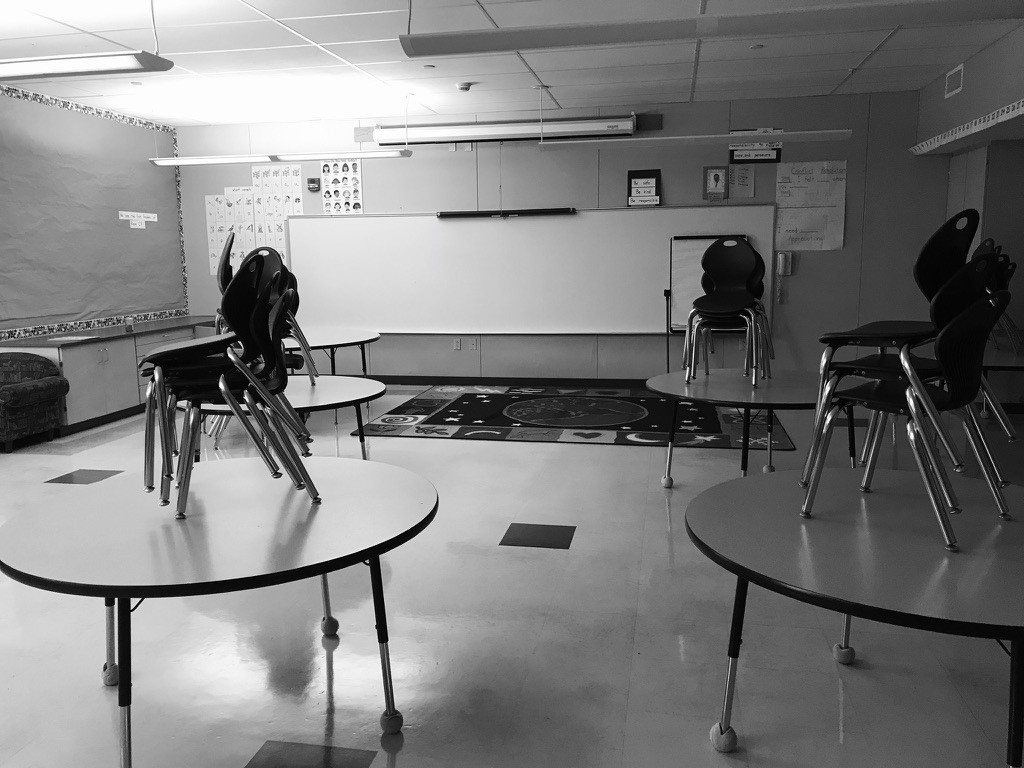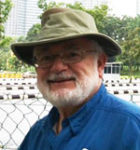

TETON VILLAGE, Wyoming – Universities paid me for 45 years to teach. Since retiring in 2012 I have given occasional lectures. At the time of my departure from teaching, Blackboard for syllabus and class assignments, Power Point and distance learning were becoming de rigueur. I clung to overhead transparencies, a technology dating from the 1950s, lecture notes, Kodak slide trays and carousels. I treasured the ability to move things around, not get stuck to a pattern. The joy of discovery lay in almost calculated disorganization, the absent minded professor. We learn even from being wrong.
Now, because of the Coronavirus, Zooming distance learning education is mandatory. My son teaches reading in the Berkeley school system, a few minutes from his home. Erika, his spouse, teaches first grade in Oakland. All summer they speculated about how school would reopen. Would they teach “live” or online?
Erika writes she is “knee deep preparing for the first day of school.… Every day will be a combination of online/Zoom live whole class instruction, online/Zoom live small group instruction, assigned work, exercise and play breaks. Fridays I reserve an hour on Zoom to connect with families, allow families to learn about online learning tools etc. If anyone wants to volunteer, please send them my way!” Erika will Zoom from home. Noah plans on Zooming from his physical classroom. Perhaps they will put a red apple on their desks while using the metaphorical Apple.
Two grandchildren in San Francisco and two in Berkeley, two in 6th and two in 9th grade, will be instructed by Zoom in their homes.
School boards, superintendents, principals and teachers have awesome responsibility and liability. How often have you heard a commencement speech and the expression, “The future is in your hands.” Before they graduate these students are public charges.
The caveat ‘do no harm’ is a vital cautionary. Even if Covid curriculum temporarily reduces educational effectiveness it is easier to fix a marginally diminished/substandard education by subsequent summer school remediation, than it is to permit the virus to spread, infect and damage children, parents and grandparents in K-12 and higher education.
Zoom classes and lectures might be a pleasure for out of school adults hungering for knowledge. It can be a logistic nightmare, disaster and catastrophe for those facilitating multiple classrooms during an 8 am to 4 pm school day.
Educational modes of presentation are uncertain and gyrating. Some schools that have opened have quarantined students for 14 days, limited students to the campus, and students should be prepared to leave on 48-hour notice if testing, infection, and mortality rates take a dangerous turn. In democracies we cushion the disruption by giving a few days to get ready, prepare, and resist. Fiats and orders are not our style, even if more people will be damaged in the interim.
Deaths per million in past pandemics were substantially greater than in Covid-19. In 1920 the population of the United States was 106 million. Deaths from the flu pandemic amounted to 675,000 in our country and 50 million worldwide. The deaths per million in the United States was 6,367 per million, more than ten (10) times our current Covid rate, which is somewhat higher than 502 per million and rising daily, regardless of underreporting and excess mortality. Deaths per million were even greater during the Black Death of the 1340s, perhaps as high as 400,000 per million in some regions. These historical mortality outcomes are unimaginable in the 21st century.
Modern medicine, science, public health, nutrition and sanitation have made quantum leaps improving life expectancy. It has also raised our expectations of being able to master nature’s aberrations. We do not blame illness on an angry god, sin, or cosmic forces. Microbes, germs, bacilli, viruses can be controlled/slowed by appropriate precautionary social behavior and defeated by vaccines. We are sensitive to the preciousness of life – smallpox, tuberculosis, polio, typhus, cholera, malaria, heart disease, AIDS, cancer and other maladies fall to our microscopes and remedies.
My introduction to American medical education was the brilliant biography of Abraham Flexner by Thomas N. Bonner, Iconoclast: Abraham Flexner and a Life in Learning (2002). Flexner’s magisterial 1910 report promoted German medical education and revolutionized American medical schools.
In our Decameron-ian retreat in Jackson Hole, Wyoming, staying with a mid-1960s college roommate, is a second year student at Albert Einstein College of Medicine in the Bronx. I watched the first three lectures in neurology with him. According to Wikipedia, Einstein, established in 1953, started with 56 students. Today the entering class is about 180 students. The majority are women, and 18% of those accepted were born outside the United States.
It takes a four-year undergraduate education, four years of medical school, and three to seven year residency to become a doctor. People go into teaching because they love their chosen subject, enjoy human contact, and revel assisting students expand their mental horizons. Classrooms are theaters lectures, hands on, interaction and interactive, questions, facial responses, collegiality, labs, intellectual bonding.
The lectures started with a bit of humor, using power point with text and illustrations, explaining the syllabus, apologies for summarization of things students probably already knew, indications what would and would not be on exams, references to future presentations, mentioning pioneers in the field, mental processes for identifying problems. I know a little more about the brain, the teacher’s passions were contagious. Students are advised to view University of British Columbia videos on Neuroanatomy. Several are available on YouTube. Einstein has adjusted its curriculum into three types of classes: Zoom; hybrid zoom and a few live students; and lab instructor, a limited number of students, with mask, hood, and distanced.
Along with graduation and certification from professional schools comes bar exams and certification boards. The Louisiana Supreme Court, with a Bar passing rate of between 85.6% and 64% among its four law schools, voted 4 to 3 to waive the bar exam. The California Supreme Court lowered the passing score from 1440 to 1390, and delayed exams until October. The Nebraska Supreme Court denied the petition to waive the Bar exam.
Despite the pressure on medical providers and staff shortages, it is unimaginable that Medical Board Exams will be waived, but then much that is happening is unimaginable.
The only thing constant in history is change; uncertainty is built in. We must be prepared to pivot, walk back, and adjust earlier pronouncements in response to new unpredictable information. Inconvenient truths are not immutable. Let’s pray the 2020 meme/trope/metaphor for chaos is limited to one year.
*
Oliver B. Pollak, Ph.D., J.D., a professor emeritus of history at the University of Nebraska Omaha, and a lawyer, is a correspondent now based in Richmond, California. He may be contacted via oliver.pollak@sdjewishworld.com
I read w great interest your previous article on Kindertransport and Post cards. In fact it was my bedtime story the other evening. In your byline, you have failed to disclose how you reached the out of the way locations in Wyoming especially in view of this pandemic. I wait your response. Wishing you
Many happy returns of the day,
Great read Oliver. I hope you and Karen are enjoying you time in Wyoming. 😊